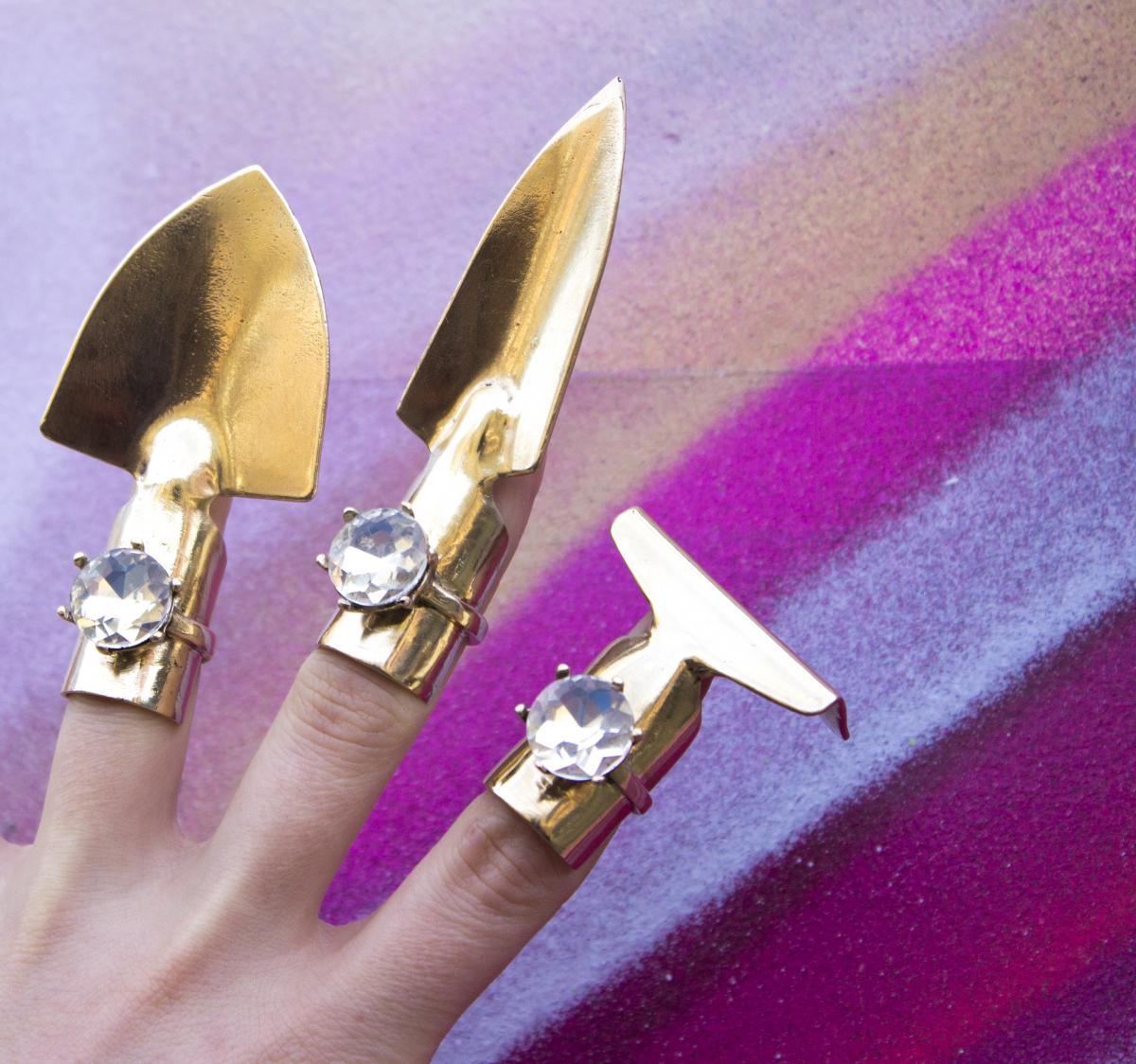Cultivating Clandestine Design
Some environmental activists travel to distant lands to protect exotic animals or preserve endangered habitats. Some are sowing the seeds of change right in their own cities.
6111 does not look like a secret agent. She looks like a perfectly normal 30-something, other than the labret piercing marking her as a member of the creative caste. But soon after moving to London several years ago, this young designer found herself drawn into the city’s seedy nightlife. Within weeks, she’d been recruited into a gang of trowel-wielding guerrilla gardeners, and if they are the James Bonds of horticulture, she is their gadget-making Q.
It’s technically illegal to grow plants on property that doesn’t belong to you, but in the 1970s activists in New York began to reshape the urban landscape without permission, turning abandoned lots into gardens and lobbing ‘seed bombs’ over neglected fences. Thirty years later the movement found a London champion in the person of Richard Reynolds, an outspoken advertising consultant with a passion for planting and growing the ranks.
Harden’s gardening arsenal includes a variety of seed pills, seed-filled gel capsules that can be dropped discreetly wherever they might have a chance to germinate. It also includes a walking stick that not only doubles as a dibble, but also dispenses seed pills through its tip.
Vanessa Harden joined Reynolds’ group in 2008, receiving the guerrilla troop number 6111. ‘I’d garden on my way to school,’ she recalled recently. ‘I found myself going to university carrying a shovel and dirt with me. And I thought, “there’s got to be a way to disguise these things, to make them chic.”’ At the time, the Victoria and Albert Museum had an exhibition about Cold War design, and her idea for covert gardening tools began to take root. Her collection The Subversive Gardener is a series of high-tech gardening gadgets concealed inside elegant everyday objects.

One cloudy London day, Reynolds carried a sleek leather briefcase up onto a grassy bit of park across the river from Parliament. He put the bag down on a patch of exposed dirt, opened it, and appeared to root around inside it. When he closed the bag and moved on, a 10 cm (4 in) round hole had been bored into the earth. Moments later, Harden set a fashionable red handbag on top of the hole, pressed a silver button near the strap, and picked up the bag to reveal a newly planted pansy.
You seem to enjoy a good story
Sign up to our infrequent mailing to get more stories directly to your mailbox.Closer inspection of both bags would reveal Harden’s ingenious gadgetry. She’d retrofitted the briefcase with a strong internal frame, a hidden hand auger, and a hole in the bottom covered by a retractable flap. Turning the auger’s wooden handle causes its screw-like blade to drill down and make a perfectly sized hole. The red bag contains a small conveyor belt capable of holding three or four seedlings in plantable paper pots. Pressing the button activates its motor, depositing a plant through a hole in the bottom of the bag.

Another of Harden’s augmented objects is a men’s Oxford shoe that dispenses a ‘seed bullet’ with every step. A small bullet reservoir is strapped to the user’s leg just above the calf, feeding the seeds into a clear tube extending down to the dispenser at the shoe’s heel. When the heel makes contact with the ground a lever advances a ratcheted feed system that releases a bullet.

The last of Harden’s initial series looks like a rather nice camera with a zoom lens, but this ‘Precision Bombing Device’ was created entirely from scratch using rapid prototyping and a lathe. The device’s gun mechanism can shoot seed bullets up to 15 m (49 ft), enough to clear a fence or set of train tracks. The camera even has a spirit level to help users aim at precisely the right angle to hit their targets.
Viewed together, the objects conjure up an imaginative world of secret agents with cleverly disguised gear carrying out clandestine horticultural operations. In Harden’s work, however, nothing is quite what it seems.
Rather than conceal covert gardening, these tools were made to have the exact opposite effect. At the highest level, the objects from The Subversive Gardener are storytelling devices, meant to bring attention to the guerrilla movement and attract the interest of a wider range of people.

Harden admits, ‘I realised that my project is really about the interaction between objects and people, the way that you instantly relate to something that you know how to use. Like the camera. It’s using the design language of one thing for an entirely different purpose.’
By creating a tangible, humorous parallel between illegal gardening and James Bond-style espionage, Harden opens up average individuals to the idea of guerrilla gardening in their own communities. The Subversive Gardener makes it appealing to imagine oneself in the role of the gardener spy.
In the years since she first unveiled the objects, Harden has received an enthusiastic reaction. ‘It’s gotten so many people wanting to participate that I had to evolve the project and develop things that people could make themselves,’ she explained. Harden created ‘seed pills’, vegetable capsules filled with compost and seed. They’re something that a kid could easily make and plant around the neighbourhood, all while feeling like a very cool secret agent.
Today, Harden gives talks and runs workshops on subversive gardening, working with diverse groups to create new tools that cheekily incorporate current trends. She’s currently collaborating with a group in Brixton on a new series of subversive objects that incorporate the design vernacular of hip-hop. Harden conceded, ‘James Bond is cool to me, but a 19-year-old is like, really?’

